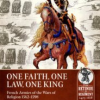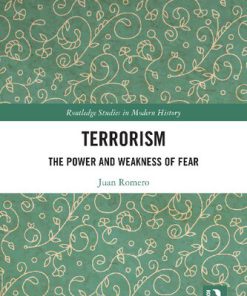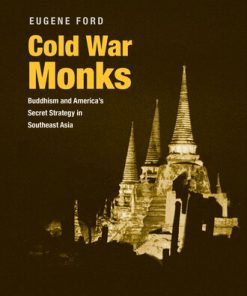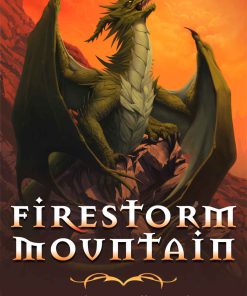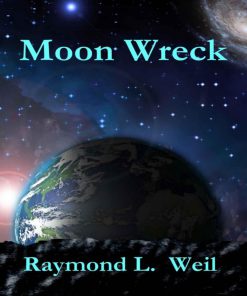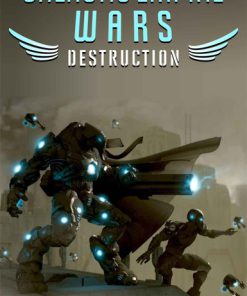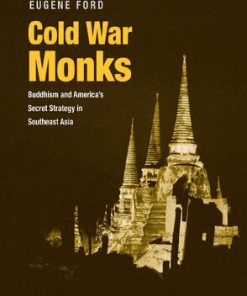Weakness and Deceit America and El Salvador s Dirty War 1st Edition by Bonner Raymond 1682190269 978-1682190265
$50.00 Original price was: $50.00.$25.00Current price is: $25.00.
Weakness and Deceit America and El Salvador s Dirty War 1st Edition by Bonner Raymond – Ebook PDF Instant Download/Delivery: 1682190269, 978-1682190265
Full download Weakness and Deceit America and El Salvador s Dirty War 1st Edition after payment
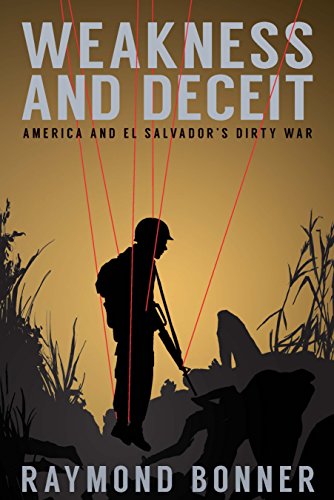
Product details:
ISBN 10: 1682190269
ISBN 13: 978-1682190265
Author: Raymond Bonner
Sound familiar?
This was Central America in the 1980s, at a time when El Salvador was the centerpiece of a misguided and ultimately disastrous foreign policy. It resulted in atrocities that took the lives of hundreds of thousands of people and destabilized a region that has not recovered to this day. At a time when the Reagan Administration’s obsession with communism overwhelmed objections to its policies, Ray Bonner took a courageous, unflinching look at just who we were supporting and what the consequences were.
Now supplemented with a epilogue drawing on newly available, once-secret documents that detail the extent of America’s involvement in assassinations, including the infamous murder of three American nuns and a lay missionary in 1980, Weakness and Deceit is a classic, riveting and ultimately tragic account of foreign policy gone terribly wrong.
Weakness and Deceit America and El Salvador s Dirty War 1st Table of contents:
PART ONE
1 THE STORY NOT TOLD
Cautiously. Tensely. Down Calle Arce we crept, past the smoldering hulks of beatup buses and overturned passenger cars. The tropical afternoon heat was stifling, adding to the nervous sweat that soaked our khaki safari jackets. We were a handful of journalists, mostly European—a British cameraman, a French photographer among them—for El Salvador was still not a major or even a very important story in the United States.
The day’s events had begun as another protest march, this one by students, who carried their hand-lettered banners with revolutionary slogans, some with triangular-folded red bandannas covering the lower portions of…
2 ROOTS OF THE REVOLUTION
I imagine the situation in El Salvador today is very much like France was before its revolution, Russia before its revolution and Mexico before its revolution,” one visitor recorded. “A socialist or communistic revolution in El Salvador may be delayed for several years, ten or even twenty, but when it comes it will be a bloody one.”
That was the warning not of a firebrand revolutionary but of the United States attaché for Central American military affairs, Major R.A. Harris. And the year was 1931. Castro was barely five years old, still running around barefoot and in shorts. Nicaragua’s Sandinista…
3 NO DEMOCRACY HERE
The woman, who spoke perfect English, sounded nervous. She was. She and her friends had made it a practice of avoiding the press, she stressed “We aren’t the oligarchy,” she said early in the conversation. But would I like to meet some Salvadorans, who owned businesses and were trying to make a go of it, who hadn’t fled the country with their capital? Of course! Getting anyone in El Salvador to talk, especially back then, January 1981, was not easy.
There were two Cabinet ministers, a couple of teachers from the American school, a woman who owned two hotel gift…
4 THE ARMY: THE LAW AND ABOVE THE LAW
“My lieutenant, by myself?” the burly thirty-seven-year-old National Guard corporal asked respectfully. They were standing in the flickering shadows cast by broad, deep-green leaves onto the pavement in front of the modern Sheraton Hotel, tucked on the lower slope of a volcano in a fashionable residential neighborhood of San Salvador.
No, it was not a one-man job. The twenty-eight-year-old red-headed lieutenant walked over to another soldier, dressed in civilian clothes, who was guarding a white Toyota sedan and a Cherokee station wagon—they belonged to an army major and a wealthy right-wing businessman—and…
5 THE CHURCH: PERSECUTION AND REVOLUTION
He was on his way to offer a Saturday evening mass in El Paisnal, the listless farm village where he had been born. A teenage boy and a seventy-two-year-old peasant man accompanied him. As their white Volkswagen moved down the dusty road between flat fields of fragrant sugarcane, gunmen lying in ambush opened fire. Father. Rutilio Grande was the target, but his friends died with him on the spot, on March 12, 1977. The archbishop demanded an investigation. The government did nothing. The country’s president, Colonel Molina, said that Father Grande had been killed as part of an international Communist…
6 THE OPPOSITION
First came the FPL, formed by dissidents within the PCS, then the ERP, out of which, after a brutal internecine dispute and the execution of a revolutionary poet, was born the FARN. There’re FAL and FAPU, the BPR and LP-28, FENASTRAS, FUERSA, ANDES, and MER. And these are just a fraction of the seemingly endless and tortuously complex agglomeration of armed guerrilla forces, unions, outlawed political parties, and grass-roots organizations that make up the Salvadoran opposition on the political left.
The collage is a political Rubik’s cube. “Tracing details of the complex schisms and affinities is like studying schematic diagrams…
PART TWO
7 THE COUP: A LOST OPPORTUNITY
The U.S. embassy had been alerted so many times that it would happen within twenty-four hours that when it received “terribly good information” that it would come during the weekend of October 12, the embassy officers asked each other, “Well, is this it? Or is it another false alarm, another weekly notice?”
“By the time we awoke Monday morning, it had happened,” recalled Ambassador Devine.
At 6:30 A.M. lieutenants and captains in barracks throughout the country began locking up their commanding officers. A few hours later General Romero received a call in the Presidential Palace informing him that his term…
8 A PLEA IGNORED
“Because you are a Christian and because you have spoken of your desire to defend human rights, I should like to express my pastoral point of view regarding what I have read and make a concrete request,” Archbishop Romero began his letter to President Carter. The Carter administration had announced that it was sending $5.7 million in military assistance to El Salvador, a quantum shift, in both the size—eleven times the average amount of military assistance for each of the preceding thirty-three years—and the nature of the policy. The archbishop was passionately opposed to the aid Military aid…
9 SEARCH FOR AN ELUSIVE CENTER
El Salvador was now a priority among United States concerns, at least in Latin America. To try to salvage what was beginning to look more and more like a hopeless situation, the Carter administration turned to Robert E. White, a career diplomat who seemed almost fond of taking on tyrants. In the State Department, and at the NSC, there was the familiar concern about dominoes. Nicaragua had “fallen” to the Sandinistas. The administration did not want another leftist government coming to power so close to the United States. But it also couldn’t stomach the Salvadoran right. White’s burden was to…
10 TRANSITION
The Avenida la Revolución is a broad, leafy boulevard, slightly inclined upward to a towering cut stone monument bearing a mosaic figure of a man with outsize hands. Tonight the street was lined with armor-reinforced Cherokees and sedans with bulletproof glass. More vehicles were neatly arranged between the white lines in the spaces of the underground parking garage. Men in civilian clothes, brandishing Magnum pistols, automatic rifles, shotguns, and submachine guns with collapsible stocks, leaned against them. Inside the Presidente, a low, modern government-owned hotel—where Sunday brunch is enjoyed at the edge of the amoeba-shaped swimming pool—a ballroom…
11 FROM A REVOLUTION TO THE COLD WAR
Ten weeks after Reagan had become President, Archbishop Rivera y Damas, who was highly respected by U.S. embassy officials, visited Washington and provided the new policymakers with a candid assessment of the reality in El Salvador. He met with Vice President Bush, Judge William Clark, deputy assistant secretary of state at the time, and Thomas Enders, in charge of Latin American affairs at State. Clark opened the meeting “by expressing satisfaction that a man of moderation, such as Bishop Rivera, speaks for the Salvadoran church,” the State Department informed all diplomatic posts in a Confidential cable. But the Reagan administration…
12 PURGE
To implement his hard-line policy in Central America, Reagan conducted one of the most thorough purges in State Department history, unlike anything since the ouster of “China hands” during the witchhunts for “Communists” by Senator Joseph McCarthy in the early 1950’s. Reagan removed from the highest levels of the State Department and as ambassadors in Central America nearly everyone with knowledge about and understanding of Latin America. In their stead were substituted men who had established their conservative reputations, in many instances a bit tarnished, in Southeast Asia. “The Gang That Blew Vietnam Goes Latin” is howThe Washington Post…
13 BLAMING OUTSIDERS
The newly elected administration issued a white paper, charging that “aggression has been loosed against an independent people who want to make their own way in peace and freedom.” The “brutal campaign of terror and armed attack” was “inspired, directed, supplied and controlled” by a neighboring Communist nation. The white paper contained what the State Department described as “massive evidence” establishing “beyond question” that the Communists were carrying out the aggression against an “established government.”
The date was February 27, 1965. The country seeking peace and freedom was South Vietnam. The Communist aggressor was North Vietnam. Sixteen years later, on…
14 WAGING WAR, REJECTING PEACE
In waging the war in El Salvador, the Reagan administration made a virtual mockery out of Congress’s role in the conduct of U.S. foreign policy. Policymakers scurried up to the Hill with confident assurances that were quickly forgotten, promises that were violated, deceits that weren’t uncovered. When these tactics didn’t suffice, the executive branch simply ignored the legislators. Reagan wasn’t the first President to conduct a foreign policy in this manner, nor is he likely to be the last. Hanging over him, however, were the ghosts of Vietnam; the lessons of El Salvador should be studied carefully by future policymakers….
15 ELECTIONS SÍ, DEMOCRACY NO
The fact that the elections were held was a justifiable cause for celebration in Washington. The turnout on election day was the ticker-tape parade for an administration that had few other successes in the conduct of its foreign policy—in El Salvador or elsewhere. But the hopes were dashed by the Reagan administration’s own antidemocratic behavior and by the torrents of blood unleashed by a military that was not about to relinquish its sovereignty to a civilian government.
The U.S. belief that elections were the “political solution” to the Salvadoran bloodshed was met with widespread skepticism. “The best case for…
16 QUIET DIPLOMACY
International terrorism will take the place of human rights in our concern,” Secretary of State Haig said one week after Reagan had been inaugurated.
What that meant for El Salvador was explained a month later, when the new administration presented its policy to the Senate Foreign Relations Committee. “Has the administration decided to offer unconditional military and economic aid to El Salvador, or will we hold the El Salvadoran Government to a commitment to efforts trying to stop rightwing terrorism and to achieve land reform?” inquired Senator Alan Cranston, Democrat of California. Undersecretary of State Stoessel answered, “Senator, we have…
17 ONE MORE TIME
There was at least one consistent element in the U.S. policy in El Salvador: the collective hand wringing about the level of violence “Let me make clear,” Assistant Secretary of State Enders said during the first certification hearings, “the control of violence is at the center of our relationship with the Salvadoran government.” Six months later Reagan dispatched Undersecretary of Defense Fred C Iklé to warn the Salvadoran military that U.S. military assistance would be terminated unless the human rights situation improved At about the same time the Salvadoran high command got the warning from General Vernon Walters, the tough-talking…
EPILOGUE
The civil war in El Salvador continued throughout the decade of the 1980s: more violence, more massacres, more assassinations. Two events in 1989, only days apart–one abroad, one at home–contributed to an accord that ended the war. The dismantling of the Berlin Wall and the collapse of the USSR sapped the spirit of the Salvadoran revolutionaries, and at the same time diminished fear in Washington that the FMLN was about to invade Texas. In that same month, November 1989, the Salvadoran guerrillas launched another “final offensive,” and it failed, just as their first one had in January 1981,…
People also search for Weakness and Deceit America and El Salvador s Dirty War 1st :
weaknesses of american democracy
weakness and deceit
american weakness
a weakness of mine
Tags:
Raymond Bonner,Weakness,Deceit America
You may also like…
Politics & Philosophy - Social Sciences
History - Military History
Dirty War Rhodesia And Chemical Biological Warfare 1975 1980 Glenn Cross
Science Fiction - Space Opera
Science Fiction - Space Opera
Science Fiction - Space Opera


